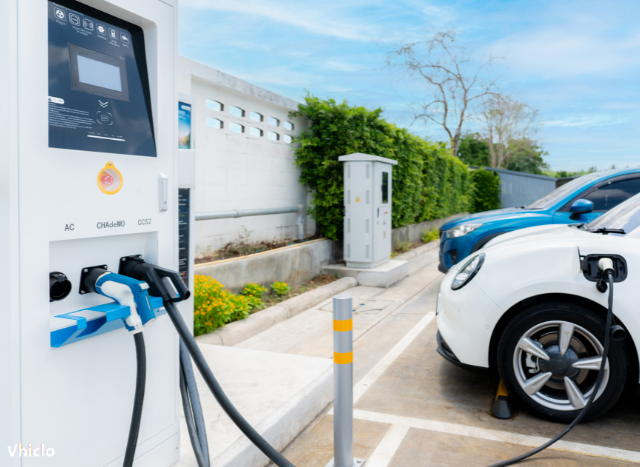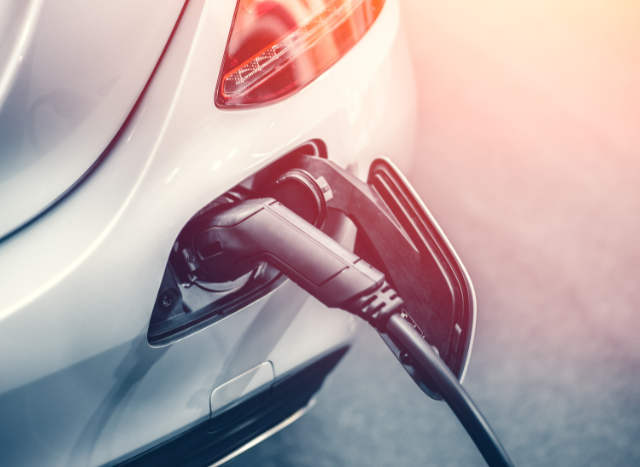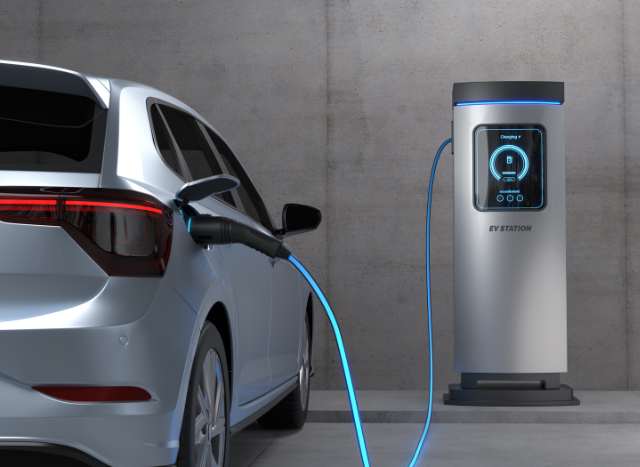Contents
- 1 Key Takeaways
- 2 What Defines Top Electric Cars?
- 3 Beyond the Sticker Price
- 4 The Battery Deep Dive
- 5 The Unseen Influences
- 6 Living with an EV
- 7 The Market’s Next Wave
- 8 Conclusion
- 9 Frequently Asked Questions
- 9.1 What makes an electric car a “top” choice?
- 9.2 Are electric cars more expensive to own than gasoline cars?
- 9.3 How long do electric car batteries last?
- 9.4 What are the key factors to consider before buying an electric car?
- 9.5 How do electric vehicles impact the environment?
- 9.6 Is it easy to charge an electric car at home?
- 9.7 What new trends are shaping the electric car market?
Key Takeaways
- Our top electric cars are led by segment leadership, offering real-world range, fast charging speeds, and software experiences that prioritize the user.
- Electric cars now have competitive ranges — generally confirmed by independent testing — and depend on variables like battery size, road conditions, and energy consumption management.
- Fast-charging and expanding charging networks are essential if we want to minimize downtime and make electric cars viable for drivers worldwide.
- Electric cars’ total cost of ownership is influenced by sticker price, operational savings, existing tax incentives, and reduced maintenance costs compared to a conventional vehicle.
- Battery technology, from improvements in lithium-ion chemistry to sustainable sourcing, directly affects electric vehicle performance, longevity, and environmental impact.
- Government initiatives, strong supply chains, and smart and autonomous technology remain some of the external factors shaping the electric vehicle status quo.
Top electric cars shine in their shrewd application of battery technology, impressive drive range, and convenient charging capabilities. While they’re not exactly cheap, most models provide transparent savings on gas and minimal maintenance costs, in addition to silent rides and silky acceleration. A number of brands offer choices with spacious cabins, rapid charging, and intelligent safety features such as lane assist and collision warnings. Purchasers can choose from compact city cars to full-sized SUVs, with the majority achieving 350 to 500 kilometers per charge. Certain models utilize fast-charging networks, while others perform great with at-home chargers. For anyone eager to slash tailpipe emissions and test out new tech, the newest electric cars deliver tangible progress. Following that are the highlights, best picks, and must-knows before you purchase.
What Defines Top Electric Cars?
What defines top electric cars — from how far, how fast, to how they feel and the technology inside. The top-rated strike a good balance between price, ownership costs, and daily use. These factors define what makes a top electric car for world buyers.

1. Segment Dominance
Electric SUVs and sedans take the top spots, as Tesla Model Y and Hyundai IONIQ 5 see strong demand. Their combination of space, safety, and range suits urban and suburban lifestyles well.
New Chinese and European brands have begun to challenge the likes of Tesla and Volkswagen. Brands like BYD and Polestar now have respectable shares — demonstrating how quickly the game shifts. Consumer preference helps define what’s best. Almost every purchaser desires AWD or RWD, soft rides, and silent cabins. Cars that bring these, like the Kia EV6 and Mercedes-Benz EQE, keep shooting up in sales.
2. Real-World Range
Real-world range still lags what makers say. For example, the Tesla Model S Long Range is rated for 652 km, but real-world tests come in closer to 600. Driving style, weather, and battery size alter this figure. City driving can stretch a charge, but high speeds or cold weather chop range. Electric cars aren’t just on par with gas cars anymore; some top models come in at as high as 512 miles (824 km) per full charge. Among the best for range: Lucid Air, Tesla Model S, and Mercedes EQS.
3. Charging Speed
Charging times vary significantly. Certain electric cars, such as the Hyundai IONIQ 6 or Porsche Taycan, can inject 300 km in less than 20 minutes at a rapid charger. Flash-charging is crucial for daily use, allowing owners to plug in for a quick boost during hectic schedules. Public charging networks assist in making electric cars more practical.
| Model | 10-80% Charge Time | Max Charging Power |
|---|---|---|
| Tesla Model 3 | ~25 min | 250 kW |
| Hyundai IONIQ 5 | ~18 min | 220 kW |
| Kia EV6 | ~18 min | 233 kW |
| Porsche Taycan | ~22 min | 270 kW |
4. Software Experience
After all, most top electric cars these days have big screens and intuitive dashboards. The Tesla Model Y, for example, applies feature additions and bug fixes via over-the-air updates. Adaptive cruise, lane assist, or smart navigation features help keep drivers safe and simplify trips. Ever since, compared to gas cars, electric models seem more high-tech and convenient.
5. Ownership Cost
Electric cars are more expensive, but with cheaper electricity and fewer moving components, running costs are much lower. Tax breaks and incentives in many countries also assist. Over five to 10 years, cars such as the Leaf and Model 3 can be less expensive than comparable gas cars because of savings on fuel, service and taxes.
Beyond the Sticker Price
With electric cars, their true cost extends far beyond the sticker price. Smart buyers consider more than the sticker price. To get the full picture, you need to look at how the car retains value, what costs lurk down the road, and how savvy decisions can protect your bank account over time.

Resale Value
Electric cars generally depreciate faster than gas cars, that’s shifting. Certain models, such as the Tesla Model 3 and Hyundai Ioniq 5, now retain value well due to increased battery durability and high demand.
Buyer’s beware, the used market is changing as more and more people want electric. Big brands with good battery warranties frequently fetch higher resale prices. Service history is clean, low mileage, and updates from the maker assist as well.
If you want to preserve resale value, maintain service and software updates. Stick with models with good battery health reputation, steer clear of rare trims, and keep every record.
Maintenance Reality
Electric cars require less maintenance than gas cars. They forego oil changes, spark plugs, and exhaust fixes. The primary activities you’ll perform are brake inspections, tire rotations, battery monitoring, and coolant checks.
Fewer moving parts means repairs are rare and less costly over the years. For instance, Nissan Leaf owners tend to have lower service bills than gas car owners. If the primary battery dies, that can translate into a big charge—although most manufacturers provide extended battery guarantees.
Checklist for EV owners:
- Check tire pressure monthly
- Rotate tires every 10,000 km
- Inspect brakes once a year
- Monitor battery health with the app or the dealer
- Update software when alerted
Insurance Premiums
Insurance for electric cars typically runs a little higher. Higher repair bills and pricey batteries are largely to blame. Rates decline as more mechanics learn to repair EVs and as more models hit the streets.
Motorists can sometimes snag savings for safety tech and green models. A handful of insurers offer discounts for intelligent charging behavior or low mileage.
- Shop around and compare quotes
- Ask about EV-specific discounts
- Bundle home and auto for more savings
- Keep safety features up to date
The Battery Deep Dive
EV batteries are the core of every leading electric vehicle. They decide how far you can drive, how fast you can charge, and how long your car sticks around. From battery types and chemistry to longevity and sustainability, here is how understanding batteries helps buyers and early-career professionals make wise choices in an industry defined by rapid change and innovation.

Chemistry
The vast majority of electric vehicles utilize lithium-ion batteries. These cells store and release energy via lithium ions shuttling between the anode and cathode within the battery. Even the specific chemistry — such as NMC or LFP — impacts a battery’s energy density, charging speed, and safety. NMC batteries, which are used in many global models, strike a nice balance between energy density and cost. LFP batteries, seen in some newer cars, provide higher resistance to thermal runaway, with a critical failure temperature up to about 270°C, much higher than others, meaning they’re less likely to catch fire.
Battery chemistry determines the lifespan of a battery, its resilience to heat and cold, and its safety. Some chemistries survive hundreds more charge cycles, boasting cycle lives of 1000–2000, in perfect charging and discharging conditions. Extreme heat, fast charging or deep discharges can diminish the battery’s lifespan or increase safety hazards. Battery manufacturers are experimenting with solid-state batteries and silicon anodes that could further improve range, safety, and lifespan. How the battery is made matters for its environmental footprint—less cobalt or more abundant chemistries provide one way toward greener electric cars.
Longevity
A car’s battery typically endures between eight and twelve years — depending on usage. Hot or cold climates, constant fast charging, and deep discharges can reduce that lifespan. Still, research indicates batteries tend to lose roughly 6 percent of capacity within the initial 32,000 kilometers, and then degrade more gradually from there.
Warranties typically include battery defects and significant range loss for eight years or 160,000 km. To extend battery life: don’t fast charge all the time, keep your battery charge between 20% and 80%, and store your car in moderate temperatures. A lot of the new EVs out there use software to optimize charge cycles and heat, increasing longevity.
Sustainability
Electric car carbon footprint: Battery production and recycling shape. Lithium, nickel, and cobalt mining can damage the environment if it’s not properly controlled. Companies are turning to stricter sourcing standards, recycling old batteries, and incorporating more recycled materials in new cells.
EVs reduce carbon emissions relative to gas cars in every region when charged by the grid, and even more so when charged with clean electricity. Recycling and reuse of batteries are on the rise, reducing waste and pollution. Lifecycle analysis reveals that the greatest benefits accrue to renewable energy and improved recycling.
Battery Specs Table
| Model | Battery Type | Capacity (kWh) | Range (km) | Fast Charge (min 10-80%) |
|---|---|---|---|---|
| Tesla Model 3 | NMC Li-ion | 60-82 | 491-602 | 27 |
| Hyundai Ioniq 5 | NMC Li-ion | 58-77 | 384-507 | 18 |
| Volkswagen ID.4 | NMC Li-ion | 52-77 | 343-522 | 30 |
| BYD Atto 3 | LFP Li-ion | 60.5 | 420 | 29 |
The Unseen Influences
Electric cars aren’t alone. Their ascent relies on external factors to determine how they’re perceived, purchased, and utilized. They are the unseen influences, difficult to observe but critically important to how quickly electric cars diffuse and who has access to them.
Government Action
Many governments provide cash rebates or tax cuts, or lower fees to make electric cars cost less. Others allow electric cars to use the bus lanes or to park without charge. They reduce the cost and increase the appeal of driving electric to new buyers.
Rules drive automakers to reduce exhaust emissions. EU limits are strict, so automakers have to sell more EVs or be fined. China has quotas for how many electric vehicles have to be sold. These rules drive disruption even if customers aren’t demanding it yet.
Witnessing bold action by leaders can help consumers place more trust in electric cars. If your city pledges to ban gas cars by 2035, you’ll feel better about buying electric now, because you know there’s support for the transition.
Norway emerges as an outlier. It utilized tax breaks, no road toll,s and free charging to normalize electric cars. So now, more than 80% of new cars sold there are electric. What this illustrates is what’s possible when government intervenes early and continues to support.
Charging Networks
Charging stations are appearing in more locations, though not all networks are user-friendly or readily visible. Other areas have large intervals between stops, which makes trips difficult for residents of non-urban locales.
Fast-charging stations are what count the most. They allow drivers to recharge in 30 minutes or less, so electric vehicles work more seamlessly with hectic schedules. Slow home charging is great for everyday requirements, but fast chargers are a blessing on road trips or in an emergency.
Car companies partner with charging companies to create larger networks. For instance, Ford and VW both join with Ionity in Europe. Tesla constructs its own Supercharger network, accessible to its vehicles and, in certain locations, other manufacturers as well.
- Tesla Supercharger (global)
- Ionity (Europe)
- ChargePoint (North America)
- Electrify America (U.S.)
- BP Pulse (UK, Europe)
Supply Chains
Securing sufficient components to assemble electric vehicles is a massive undertaking. Chip shortages or shipping delays can stall entire factories. It means buyers occasionally wait months for a new car.
Batteries require materials such as lithium, cobalt, and nickel. These are not necessarily simple to obtain. Prices can swing hard, and some mines are in remote locations or have difficult labor policies. Firms now seek more secure, stable sources to keep battery lines humming.
Constructing cars nearer where they’ll be sold reduces hazards. Local plants can avoid certain shipping glitches and maintain lower prices.
To catch up, car manufacturers are reinventing how they source components. Some sign deals years out or even invest in mining companies. Others, such as Tesla, create their battery tech and construct facilities that can pivot from one component to another with less downtime.
Living with an EV
Living with an EV changes day-to-day life, small and large. Home charging takes the gas station out of it, and the ride is just smoother and quieter. Yes, figuring out how to deal with range and charge times is part of the experience, but the payoffs include immediate acceleration, tons of cargo room, and reduced maintenance.

Smart Integration
Most leading EVs are now equipped with intelligent technology that simplifies the experience. Smartphone apps allow you to monitor charge status, precondition the cabin temperature, and map your journey around charging locations. Others, such as the Tesla Model 3 and the Hyundai Ioniq 5, feature remote software updates, live traffic info, and voice controls. This means you’re able to unlock your car, turn the ignition or even check up on battery health right from your phone, no matter what location you’re at. Smart integration lets your car learn your habits, suggest shortcuts, and even remind you to plug in when you get home.
Autonomous Features
Most EVs now employ sensors and cameras to provide features such as adaptive cruise control, lane keeping, and emergency braking. This is what prevents traffic jams and makes driving safer and less stressful. Full self-driving isn’t ubiquitous yet, but brands like Tesla, Mercedes-Benz EQS, and Nissan Leaf offer advanced driver-assistance systems that can take over limited highway driving and parking duties. Self-driving technology offers promise for reduced accidents and less stressful commutes, but complications persist with legal regulations and real-world security. Such capabilities could characterize more electric cars in the future as protocols and regulations develop.
Everyday Convenience
Home charging is certainly one of the key benefits. Plug in at night and get up to a full battery—no more anti-climactic early morning gas station pit stops. Most discover that a wall outlet or a basic home charger is sufficient for their daily requirements. Fast charging at public stations is booming, but it still takes longer than filling up with gas. Planning longer trips entails verifying charger locations en route. Eventually, everyone gets used to these differences and appreciates the cheap, peaceful drive and reduced mechanic trips.
Maximizing Benefits
Charging off-peak saves money, too. Maintain the battery at 20% – 80% for long life. Master your local charging network for road trips. Take advantage of your car’s smart features to track power consumption and receive service alerts.
The Market’s Next Wave
Electric cars keep moving fast. More of us want clean drives and easy maintenance. This influences where car companies look next. Battery tech is the key part. New solid-state batteries, for instance, can store more power and charge faster than ancient lithium-ion packs. They make cars go further—most recently, many flagship cars are now exceeding 500km on a charge. This brings gas cars up to speed. Fast chargers, now launching in city centers and highways, are all about waiting less. Brands like Hyundai, Volkswagen, and Tesla go to extremes, experimenting with battery swaps and wireless charging to make things more convenient for drivers.
Smart features aren’t something exceptional anymore. New models contribute to self-driving systems that can steer, brake, and park themselves in rudimentary scenarios. Even over-the-air updates so you can take advantage of new features without a visit to the shop. A lot of electric cars now employ heat pumps and intelligent cooling, so they function in hot or cold regions. That makes people in more parts of the world trust these cars. In-car tech improves. Big screen, voice assistant, and phone integration are standard. Safety improvements emerge as well, with additional sensors and warning systems to watch out for cyclists or pedestrians.
Quite a few brands have new models in store. Just a few ahead are the Polestar 4, Nissan Ariya, and BMW i5. These vehicles combine design, distance, and affordable price, attracting attention from the media and initial consumers. They utilize new shapes, lighter frames, and smart gear inside. Some even experiment with new concepts, such as employing solar roofs to extend daily range by a handful of kilometers. With more brands coming onboard, there’s a model for pretty much every necessity – from compact city cars to large SUVs.
The market will presumably continue to expand as prices decline. Industry insiders believe that by 2030, EVs may be equally affordable as traditional vehicles. Regulations in large markets such as the EU and China are demanding cleaner vehicles, accelerating this transition even further. More choice, better tech, and new rules all indicate electric cars will dominate the road in the coming years.
Conclusion
Top electric cars provide more than just clean energy. They provide rapid acceleration, minimal maintenance, and intelligent technology. Motorists witness shifts in charging, mileage, and expenditures. With fresh battery work and smart software, each new model gets easier to own. Cities add more charging stations. Manufacturers employ lighter materials and intelligent systems to extend vehicles’ ranges. Some guys choose EVs to assist the earth, some for low prices, and some for the get-up-and-go sensation. Each selects what best matches. Looking for your next EV? Review the specs, map your route,s and take a test drive if possible. So dig in, ask around, and see what works for your road.
Frequently Asked Questions
What makes an electric car a “top” choice?
Best electric cars for long range, fast charging, best safety ratings, and technology. They come with great value and customer happiness.
Are electric cars more expensive to own than gasoline cars?
Although electric vehicles can be pricier, they tend to save a lot on service and charging. Over the long run, this generally results in savings over gas-powered cars.
How long do electric car batteries last?
Typically, most electric car batteries last 8-10 years. Most car companies provide coverage for this duration.
What are the key factors to consider before buying an electric car?
Think about range, charging options, battery life, safety features, and overall ownership cost. Consider your daily driving requirements and community charging options.
How do electric vehicles impact the environment?
EVs emit zero tailpipe emissions. When powered by renewable energy, they can drastically slash your carbon footprint relative to conventionally fueled cars.
Is it easy to charge an electric car at home?
Yeah, you can charge most electric cars at home from a regular wall socket or home charging station, so day-to-day use is practical.
What new trends are shaping the electric car market?
New trends are longer ranges, faster charging, better affordability, and driver-assistance features. More models are coming out around the world, so there’s more consumer choice.

Shaker Abady is a seasoned Automotive Engineer with a deep passion for vehicle innovation, performance optimization, and industry trends. With hands-on experience in mechanical systems, diagnostics, and emerging automotive technologies, Shaker brings a unique perspective to every piece he writes. Whether he’s breaking down the latest EV advancements or analyzing classic engine designs, his insights are rooted in real-world expertise and a lifelong enthusiasm for everything on wheels.






